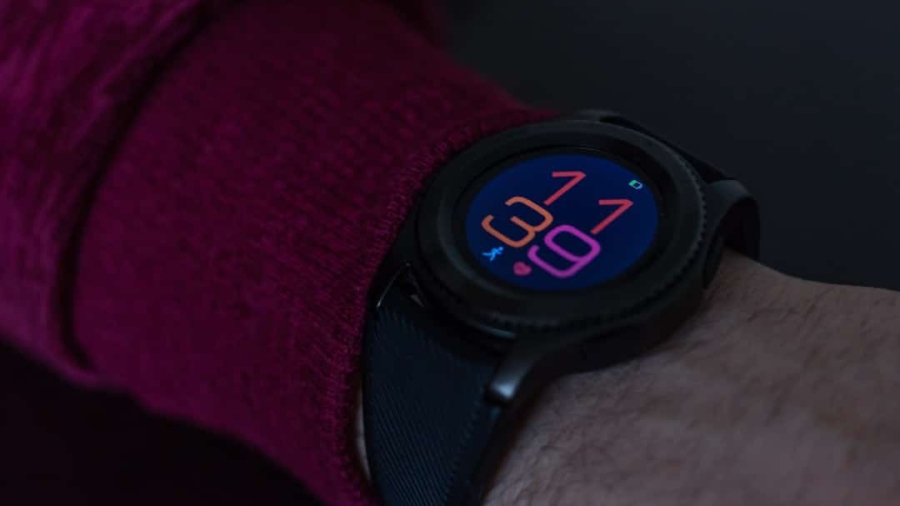The advent of artificial intelligence (AI) has revolutionized numerous sectors, and the realm of wearable technology is no exception. Wearable devices, which include smartwatches, fitness trackers, and health monitors, have evolved significantly over the past decade. Initially designed to track basic metrics such as steps taken or heart rate, these devices have now integrated sophisticated AI algorithms that enhance their functionality and user engagement.
The convergence of AI with wearable technology has not only improved the accuracy of data collection but has also enabled predictive analytics, personalized experiences, and real-time feedback, making these devices indispensable tools for health management and lifestyle optimization. As consumers increasingly seek devices that offer more than just basic tracking capabilities, manufacturers are responding by embedding AI into their products. This integration allows wearables to analyze vast amounts of data collected from users, providing insights that were previously unattainable.
For instance, AI can identify patterns in a user’s activity levels, sleep quality, and even stress indicators, leading to tailored recommendations that promote healthier living. The implications of this technology extend beyond individual users; healthcare providers can leverage aggregated data from wearables to monitor patient health trends and improve treatment outcomes. Thus, AI-powered wearable devices represent a significant leap forward in personal health management and preventive care.
Key Takeaways
- AI-powered wearable devices are revolutionizing the way we interact with technology, offering a range of benefits from health tracking to safety features.
- Predictive capabilities in wearable technology allow for proactive and personalized user experiences, from suggesting exercise routines to predicting health issues.
- AI is enhancing user experience in wearable devices by providing real-time feedback, personalized recommendations, and seamless integration with other smart devices.
- AI enables personalized health and fitness tracking in wearables by analyzing data and providing tailored insights and recommendations for individual users.
- The integration of AI in wearable devices is enhancing safety and security features, such as emergency response systems and real-time location tracking.
The role of predictive capabilities in wearable technology
Predictive capabilities are at the forefront of the advancements in wearable technology, enabling devices to forecast user behavior and health outcomes based on historical data. By employing machine learning algorithms, wearables can analyze patterns in a user’s daily activities, physiological responses, and even environmental factors to make informed predictions.
This proactive approach allows users to take preventive measures before issues escalate, fostering a more health-conscious lifestyle.
For individuals with conditions such as diabetes or hypertension, AI can analyze real-time data from glucose monitors or blood pressure cuffs to predict fluctuations that may require immediate attention.
By alerting users to potential health risks before they manifest into serious complications, these devices empower individuals to manage their conditions more effectively. The ability to anticipate health events not only enhances personal well-being but also reduces the burden on healthcare systems by minimizing emergency interventions.
The impact of AI on improving user experience in wearable devices
The integration of AI into wearable devices has significantly transformed the user experience by making interactions more intuitive and personalized. Traditional wearables often required users to manually input data or navigate through complex menus to access information. In contrast, AI-driven wearables utilize natural language processing (NLP) and voice recognition technologies to facilitate seamless communication between the user and the device.
Users can simply ask their smartwatches for updates on their fitness goals or request reminders for medication, making the experience more user-friendly and accessible. Additionally, AI enhances the personalization of wearable devices by adapting to individual preferences and behaviors over time. For instance, fitness trackers can learn a user’s exercise habits and suggest tailored workout plans that align with their goals and fitness levels.
This level of customization not only increases user engagement but also fosters a sense of ownership over one’s health journey. Furthermore, AI can analyze user feedback and adjust device settings accordingly, ensuring that the wearable remains relevant and effective in meeting the user’s evolving needs.
How AI is enabling personalized health and fitness tracking in wearables
Personalization is a key feature that distinguishes modern AI-powered wearables from their predecessors. By leveraging machine learning algorithms, these devices can create individualized health profiles based on a user’s unique data set. For example, a fitness tracker may monitor a user’s heart rate, sleep patterns, and activity levels to generate personalized insights that guide them toward achieving their fitness goals.
This tailored approach not only enhances motivation but also improves adherence to health regimens. Moreover, AI enables wearables to provide real-time feedback that is specific to the user’s current state. For instance, if a user is engaging in a workout that exceeds their usual intensity level, the device can alert them to slow down or take breaks based on their heart rate data.
This immediate feedback loop helps users make informed decisions about their physical activity, reducing the risk of injury while optimizing performance. Additionally, AI can analyze long-term trends in user data to suggest lifestyle changes that promote overall well-being, such as adjusting sleep schedules or incorporating mindfulness practices into daily routines.
The integration of AI in enhancing safety and security features of wearable devices
Safety and security are paramount concerns for users of wearable technology, particularly as these devices often store sensitive personal health information. AI plays a crucial role in enhancing these features by implementing advanced security protocols and real-time monitoring systems. For instance, some wearables are equipped with fall detection algorithms that utilize accelerometers and gyroscopes to identify sudden movements indicative of a fall.
When such an event is detected, the device can automatically alert emergency contacts or services, providing an essential safety net for vulnerable populations such as the elderly. In addition to physical safety features, AI also bolsters data security through biometric authentication methods such as fingerprint recognition or facial recognition. These measures ensure that only authorized users can access sensitive information stored on the device.
Furthermore, AI can continuously monitor for unusual patterns of behavior that may indicate unauthorized access attempts or data breaches. By employing machine learning techniques to adapt security measures based on user behavior, wearables can provide a robust defense against potential threats while maintaining user trust.
The future of AI-powered wearable devices and their potential applications
The future of AI-powered wearable devices is poised for remarkable growth as technological advancements continue to unfold. One promising area is the integration of augmented reality (AR) with wearables, which could revolutionize how users interact with their environment. Imagine smart glasses that not only display notifications but also provide real-time health insights based on biometric data collected from the wearer.
Such applications could enhance training for athletes by overlaying performance metrics during practice sessions or assist healthcare professionals by providing instant access to patient data during consultations. Moreover, as AI algorithms become more sophisticated, we can expect wearables to play an increasingly significant role in preventive healthcare. With the ability to continuously monitor vital signs and detect anomalies early on, these devices could serve as frontline tools for identifying potential health issues before they escalate into serious conditions.
This shift towards proactive health management could lead to a paradigm change in how we approach healthcare delivery, emphasizing prevention over treatment.
Ethical considerations and concerns surrounding AI in wearable technology
While the benefits of AI-powered wearable devices are substantial, they also raise important ethical considerations that must be addressed. One primary concern is privacy; as wearables collect vast amounts of personal data, there is an inherent risk of misuse or unauthorized access to sensitive information. Users must be assured that their data is handled responsibly and securely by manufacturers who prioritize transparency in data collection practices.
Additionally, there are concerns regarding algorithmic bias in AI systems used within wearables. If the training data used to develop these algorithms is not representative of diverse populations, it may lead to inaccurate predictions or recommendations for certain demographic groups. This could exacerbate existing health disparities rather than mitigate them.
Therefore, it is crucial for developers to ensure that their algorithms are trained on diverse datasets and undergo rigorous testing to validate their effectiveness across different populations.
The potential benefits and challenges of AI-powered wearable devices
AI-powered wearable devices hold immense potential for transforming personal health management and enhancing user experiences through predictive analytics and personalized insights. However, as this technology continues to evolve, it is essential to navigate the accompanying challenges thoughtfully. Balancing innovation with ethical considerations will be critical in ensuring that these devices serve as beneficial tools for all users while safeguarding their privacy and security.
As we look ahead, the integration of AI into wearable technology promises not only improved health outcomes but also a more engaged and informed user base. By harnessing the power of AI responsibly, we can unlock new possibilities for enhancing well-being and fostering healthier lifestyles across diverse populations. The journey toward fully realizing the potential of AI-powered wearables will require collaboration among technologists, healthcare professionals, ethicists, and consumers alike to create solutions that are both effective and equitable.
A related article to “How AI Is Powering Next-Gen Wearable Devices with Predictive Capabilities” is “Hacker Noon Covers a Range of Topics Across the Tech Sector.” This article discusses various topics within the tech industry, including the advancements in artificial intelligence that are revolutionizing wearable devices. To learn more about the latest trends and innovations in technology, check out Hacker Noon Covers a Range of Topics Across the Tech Sector.
FAQs
What are next-gen wearable devices?
Next-gen wearable devices are advanced, technology-driven devices that can be worn on the body to track and monitor various aspects of the user’s health and fitness. These devices often incorporate artificial intelligence (AI) to provide predictive capabilities and personalized insights.
How is AI being used in next-gen wearable devices?
AI is being used in next-gen wearable devices to analyze the data collected from various sensors and provide predictive insights. This allows the devices to anticipate the user’s needs, provide personalized recommendations, and even detect potential health issues before they arise.
What are the benefits of AI-powered next-gen wearable devices?
The benefits of AI-powered next-gen wearable devices include more accurate and personalized health and fitness tracking, proactive health monitoring, and the ability to provide actionable insights to the user. These devices can also help users make informed decisions about their health and well-being.
What types of predictive capabilities can AI-powered wearable devices provide?
AI-powered wearable devices can provide predictive capabilities such as predicting potential health issues based on the user’s data, anticipating the user’s activity and fitness goals, and even providing personalized recommendations for improving overall health and well-being.
How is AI improving the user experience with wearable devices?
AI is improving the user experience with wearable devices by providing personalized and proactive insights, reducing the need for manual input or interaction, and offering a more seamless and intuitive user interface. This can lead to a more engaging and effective experience for the user.



